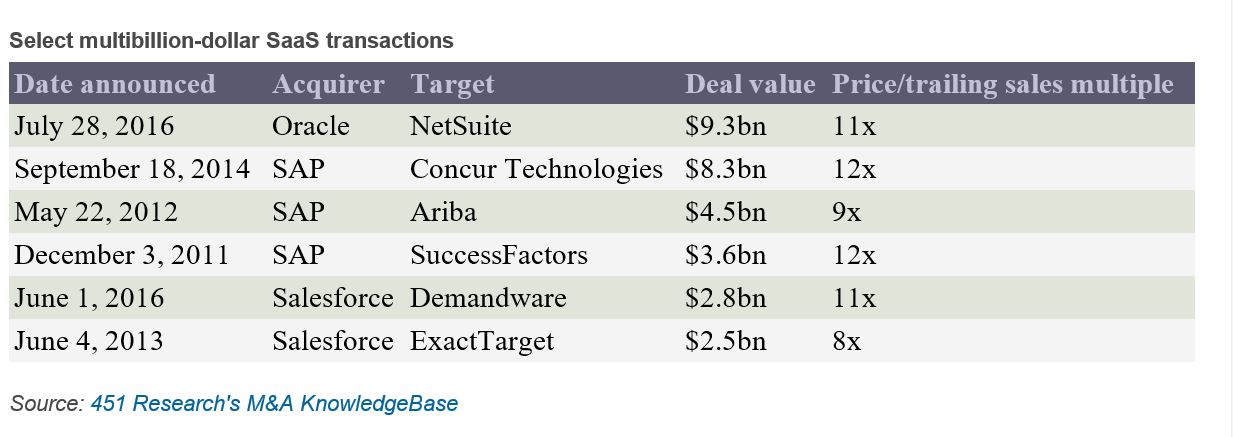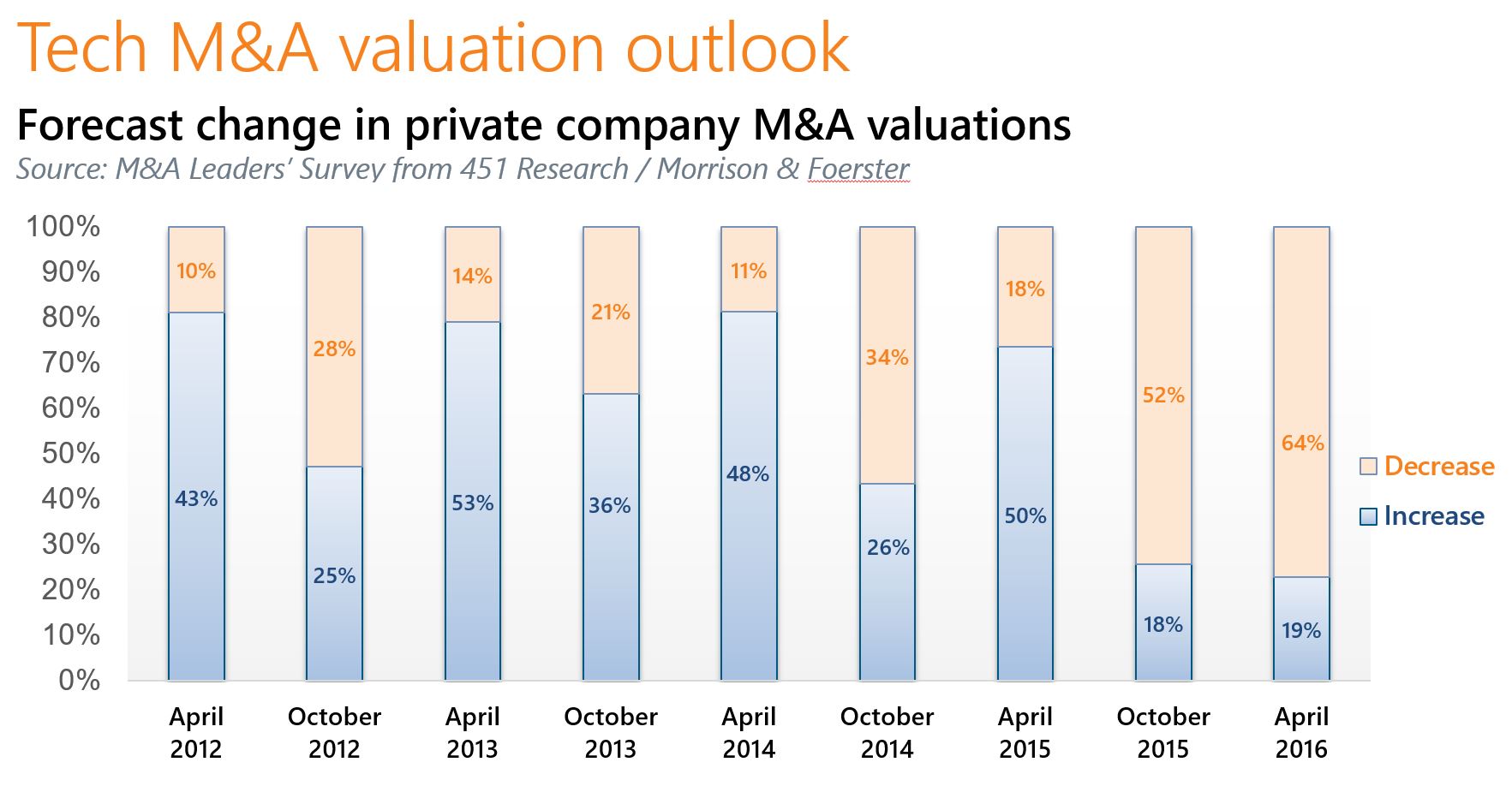by Brenon Daly
Announcing the largest-ever SaaS transaction, Oracle says it will pay $9.3bn in cash for cloud ERP vendor NetSuite. The deal, which is expected to close before year-end, involves the ever-acquisitive Oracle snapping up the roughly 54% of NetSuite not already owned by Oracle founder and executive chairman Larry Ellison.
Terms call for Oracle to pay $109 for each share of NetSuite. Oracle’s bid represents a premium of nearly 60% over NetSuite’s closing price 30 days ago, before rumors swirled about this pairing. Although the premium is about twice as rich as typical enterprise software transactions, NetSuite is still valued just a smidge below its highest-ever stock price, which it hit in early 2014.
NetSuite is the latest SaaS firm that Oracle has gobbled up as the 29-year-old company increasingly stakes its future on cloud software. After initially ignoring – and even dismissing – the disruptive trend of subscription-based software, Oracle, which still sold more than $7bn worth of software licenses in its just-completed fiscal year, went on a SaaS shopping spree. In addition to NetSuite (ERP), Oracle’s other recent SaaS deals valued at $1bn or more include: Taleo (HR software), Responsys (marketing software), RightNow (CRM) and Datalogix (marketing data).
At an equity value of $9.3bn, NetSuite is valued at 11x its trailing 12-month revenue of $846m. That matches the average multiple paid by rival SAP in its multibillion-dollar SaaS acquisitions, as well as the valuation Salesforce put on e-commerce provider Demandware in June.
Further, to underscore the value that can accrue through the subscription model, it’s worth noting that NetSuite’s double-digit multiple is basically twice the multiple that Oracle has paid for the license-based software vendors it has acquired. (Of course, some of the discrepancy can be attributed to NetSuite’s enviable 30% growth rate, even as the 18-year-old company hits a $1bn run rate.)
Specifically, consider Oracle’s purchase more than a decade ago of PeopleSoft, which would stand as a representative ERP transaction for the ‘Software 1.0’ era while NetSuite serves as a ‘Software 2.0’ deal. Although Oracle paid $1bn more for PeopleSoft than NetSuite, PeopleSoft generated three times more revenue than NetSuite. Put another way, if we applied PeopleSoft’s valuation of 4x trailing sales to NetSuite, Oracle would have had to pay only $3.4bn – rather than $9.3bn – to take it home.


